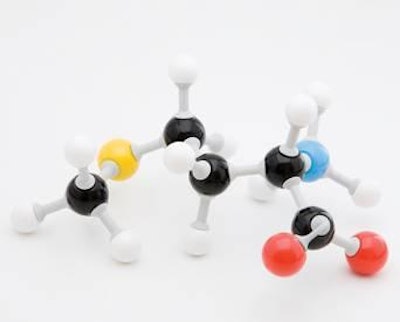
Under current commercial production practices, ammonia reduction in layer houses is considered desirable because it can improve animal health and welfare, not to mention creating a better environment for farm workers. Ammonia is produced as a result of microbial action on excess nitrogen in the excreta.
In most cases, measures to reduce ammonia in the layer house are considered after this compound has been released from manure. Such measures include increased house ventilation and reduction of moisture, especially in open-house layers kept on litter. Concerns have been raised in the EU and by regulators in the U.S. over the possible environmental impact of ammonia emitted from layer houses via exhaust fans. Through dietary modifications it is possible to reduce production of ammonia, complementing other control measures. Nutritional intervention strategies to minimize ammonia emission include the following:
1. Reduced dietary protein. Protein is composed of amino acids that birds utilize for maintenance and egg production. Mature birds do not have a protein storage mechanism, so protein provided in the diet above the birds needs is broken down and utilized as an energy source and the excess nitrogen is excreted. Reducing dietary protein requires that all essential amino acids will be included in the ration up to the specified amounts, often by use of crystalline amino acids. Incorporation of crystalline amino acids in the diet can allow for a reduction in the total protein level of the ration.
Dropping dietary crude protein levels by 2 percentage points is quite possible, but further decreases require careful balance of amino acids beyond the usual (methionine, lysine, threonine, tryptophan) to include such less commonly considered, but equally important, amino acids such as valine, isoleucine and histidine (in barley-based diets). One extra benefit of reduced protein will be the reduced requirement for water intake (excess protein requires water as part of the excretion process). This in turn results in drier litter, and, consequently, in less moisture in the air.
2. Reduced mineral levels, other than calcium and phosphorus. As long as calcium and phosphorus requirements are met to ensure full eggshell quality, all other minerals can be minimized to reduce, again, excess water intake. Salt in particular can be totally omitted if other sources of sodium (and chloride, if need be) are added in the diet. Excess dietary potassium is also known to considerably increase water intake.
3. Feed additives that reduce urine pH. Acidic pH in urine dramatically reduces the production of ammonia from excreted nitrogen. To reduce urinary pH, the most effective way is by adding specific organic acids in feed or drinking water. One such example is citric acid, but other organic acids are also of considerable use in practice, although experiences tend to vary.
4. Binding of ammonia in manure. Certain additives, including dietary clay products (zeolites, for example), have been claimed to bind ammonia, preventing it from being released in the environment. Thus, when included in animal feed, they can work directly on the excreta and may be worth considering if combined with the above measures.

















